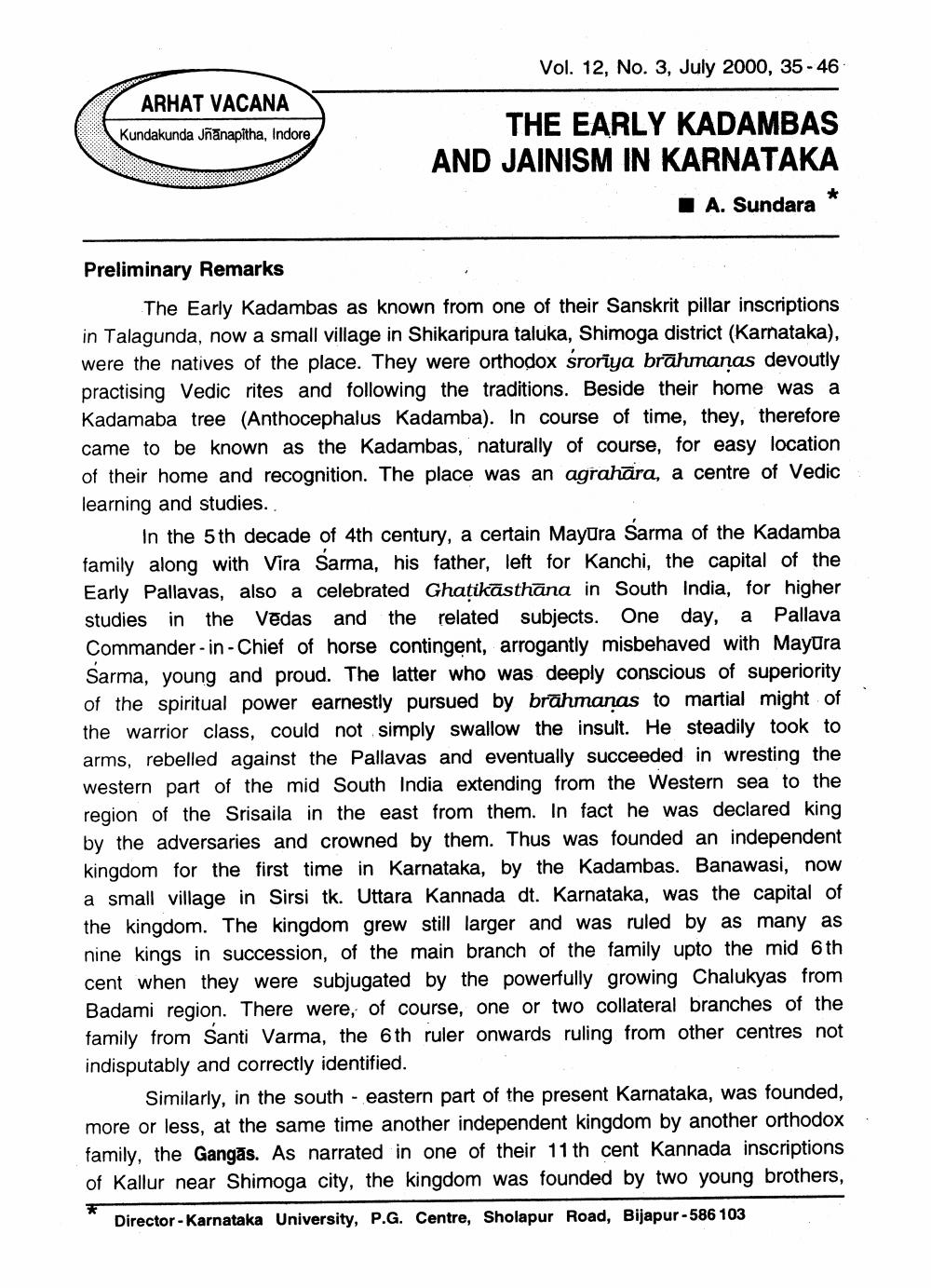________________
ARHAT VACANA
Kundakunda Jñanapitha, Indore
Vol. 12, No. 3, July 2000, 35-46
THE EARLY KADAMBAS AND JAINISM IN KARNATAKA A. Sundara
Preliminary Remarks
The Early Kadambas as known from one of their Sanskrit pillar inscriptions in Talagunda, now a small village in Shikaripura taluka, Shimoga district (Kamataka), were the natives of the place. They were orthodox śrorlya brahmanas devoutly practising Vedic rites and following the traditions. Beside their home was a Kadamaba tree (Anthocephalus Kadamba). In course of time, they, therefore came to be known as the Kadambas, naturally of course, for easy location of their home and recognition. The place was an agrahara, a centre of Vedic learning and studies..
In the 5th decade of 4th century, a certain Mayura Sarma of the Kadamba family along with Vira Sarma, his father, left for Kanchi, the capital of the Early Pallavas, also a celebrated Ghatikästhäna in South India, for higher. studies in the Vedas and the related subjects. One day, a Pallava Commander-in-Chief of horse contingent, arrogantly misbehaved with Mayura Sarma, young and proud. The latter who was deeply conscious of superiority of the spiritual power earnestly pursued by brahmanas to martial might of the warrior class, could not simply swallow the insult. He steadily took to arms, rebelled against the Pallavas and eventually succeeded in wresting the western part of the mid South India extending from the Western sea to the region of the Srisaila in the east from them. In fact he was declared king. by the adversaries and crowned by them. Thus was founded an independent kingdom for the first time in Karnataka, by the Kadambas. Banawasi, now a small village in Sirsi tk. Uttara Kannada dt. Karnataka, was the capital of the kingdom. The kingdom grew still larger and was ruled by as many as nine kings in succession, of the main branch of the family upto the mid 6th cent when they were subjugated by the powerfully growing Chalukyas from Badami region. There were, of course, one or two collateral branches of the family from Santi Varma, the 6th ruler onwards ruling from other centres not indisputably and correctly identified.
*
Similarly, in the south eastern part of the present Kamataka, was founded, more or less, at the same time another independent kingdom by another orthodox family, the Gangas. As narrated in one of their 11 th cent Kannada inscriptions of Kallur near Shimoga city, the kingdom was founded by two young brothers,
Director - Karnataka University, P.G. Centre, Sholapur Road, Bijapur-586 103




